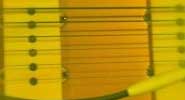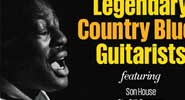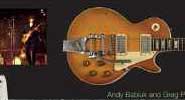 Logjam Music has added the Prolog and Travelog to its line of Logarhythms percussive stompers. The devices respond to foot tapping and produce a low-end tone that can be varied by tapping on different areas of their chambered block while wearing hard- or soft-soled footwear. Hand-made, they are analog, purely passive, and made of sapele. Their sound is transmitted via a dynamic microphone to amplification such as a guitar combo, PA, or recording desk via its a standard ¼” Neutrik output jack. They have a non-slip base that isolates floor vibrations. Learn more at www.logjam.net.
Logjam Music has added the Prolog and Travelog to its line of Logarhythms percussive stompers. The devices respond to foot tapping and produce a low-end tone that can be varied by tapping on different areas of their chambered block while wearing hard- or soft-soled footwear. Hand-made, they are analog, purely passive, and made of sapele. Their sound is transmitted via a dynamic microphone to amplification such as a guitar combo, PA, or recording desk via its a standard ¼” Neutrik output jack. They have a non-slip base that isolates floor vibrations. Learn more at www.logjam.net.
Year: 2014
-
Logjam Music Adds Travelog and Prolog Acoustic Stompers
-
La Bella Offers Low Tension Flexible Flats
La Bella Strings’ Low Tension Flexible Flats are designed to deliver classic sound without the “floppy” effect associated with other light-tension flatwound strings. Hand-wound and hand-polished, they have round cores and narrower ribbon wire to achieve a smooth feeling, and are available in four-
 and five-string sets in standard long-scale, as well as short, medium, and extra-long scales. See more at www.labella.com.
and five-string sets in standard long-scale, as well as short, medium, and extra-long scales. See more at www.labella.com. -
MBS Effects Releases Stonecutter High-Gain Distortion
 MBS Effects’ Stonecutter is a modern-voiced high-gain distortion with active three-band EQ. The Bass control is designed to not compromise the attack, while the Mid control has 25-db cut/boost capability. Constructed using top-quality components and true-bypass switching, it has a stage-ready status LED and can be operated on 9 or 18 volts. Visit www.mbsffects.com.
MBS Effects’ Stonecutter is a modern-voiced high-gain distortion with active three-band EQ. The Bass control is designed to not compromise the attack, while the Mid control has 25-db cut/boost capability. Constructed using top-quality components and true-bypass switching, it has a stage-ready status LED and can be operated on 9 or 18 volts. Visit www.mbsffects.com. -

João Erbetta & Adam Levy and Panamericans!

 A glimpse at João Erbetta’s résumé brings to mind Harry Belafonte’s tongue-in-cheek introduction of Carlos Santana at the 2013 Kennedy Center Honors, begging for immigration reform because the Mexican native had squelched his hopes for a calypso revival. Since ’06, when he moved to the States from Brazil (where he was a member of the hard-rocking Los Pirata), Erbetta has cranked out solo and group CDs. And while he hasn’t been honored at the Kennedy Center (yet), he’s performed there as well as at the White House.
A glimpse at João Erbetta’s résumé brings to mind Harry Belafonte’s tongue-in-cheek introduction of Carlos Santana at the 2013 Kennedy Center Honors, begging for immigration reform because the Mexican native had squelched his hopes for a calypso revival. Since ’06, when he moved to the States from Brazil (where he was a member of the hard-rocking Los Pirata), Erbetta has cranked out solo and group CDs. And while he hasn’t been honored at the Kennedy Center (yet), he’s performed there as well as at the White House.His latest one-two punch consists of a second offering from L.A.’s Panamericans! and a guitar-duo set with Adam Levy. This time around, the Panamericans! are drummer Pete Curry (bassist with Los Straitjackets, lead guitarist with the Halibuts), bassist Rob Douglas (Chuck Profitt, Mike Stinson), and guest saxophonist Ron Dziubla (now a full-timer), with guitarist Eddie Angel sitting this one out. Levy’s guitar solos will be familiar to anyone who’s heard Tracy Chapman’s “Give Me One Reason” or Norah Jones’ “Come Away with Me” – in other words, every person on Earth. He has also recorded with Amos Lee and Ani DiFranco, among others.
Erbetta’s style somehow juxtaposes and blends jazz, Latin, surf, spaghetti Western, and easy listening – like a contemporary Al Caiola. His and Levy’s different backgrounds help rather than hinder their interplay, both as self-contained duo and co-writers. The main thing they have in common is respect for melody. So originals like the uncategorizable, old-is-new-again “Sad Texan” sit comfortably alongside a slowed-down rendition of mambo king Perez Prado’s 1958 chart-topper “Patricia.”
Meanwhile, the Panamericans!dip further into the Crescent City, albeit with a surf-combo edge to instrumental arrangements of Allen Toussaint’s and Earl King’s R&B and Sidney Bechet’s and King Oliver’s early jazz. If Erbetta is prolific, his compadres are equally versatile. It’s mind boggling to realize that the multi-instrumentalist (and engineer) playing drums à la Sam Butera & the Witnesses got his start with the Chocolate Watchband.
Erbetta mainly opts for a more trebly tone here (though he handles multiple guitar parts and personalities), with Dziubla’s raunchy tenor (already given Duane Eddy’s stamp of approval) the perfect counterpart. Jazz goes surfing or surfers after dark – take your pick; it’s all good.
This article originally appeared in VG‘s May ’14 issue. All copyrights are by the author and Vintage Guitar magazine. Unauthorized replication or use is strictly prohibited.
-
Keeley Ships Neutrino Envelope Filter
 The new Keeley Electronics Neutrino Envelope Filter employs a compact circuit based on an opto-coupler and has controls for input Gain, resonance Peak, Filter selector, tone Range, and Drive direction. Hand-built in the U.S. and housed in a powdercoated enclosure, it has true-bypass switching and its side-mounted/recessed Drive switch and internal output Volume keep the look clean. Visit www.rkfx.com.
The new Keeley Electronics Neutrino Envelope Filter employs a compact circuit based on an opto-coupler and has controls for input Gain, resonance Peak, Filter selector, tone Range, and Drive direction. Hand-built in the U.S. and housed in a powdercoated enclosure, it has true-bypass switching and its side-mounted/recessed Drive switch and internal output Volume keep the look clean. Visit www.rkfx.com. -
Fender to Close New Hartford Facility, Cease U.S. Production of Ovation
Fender Musical Instruments Corporation (FMIC) announced today that it will close its New Hartford, Connecticut, manufacturing facility in June, citing current market conditions and insufficient volume levels as the cause. U.S. production of Fender acoustic and Guild instruments will transition to other facilities at a later date, while domestic production of U.S.-made Ovation instruments will cease. The move affects 46 employees in New Hartford, who, the company says, will be offered severance packages, outplacement services, and other related assistance.
“We are committed to providing the same high-quality musical instruments our artists, consumers, and customers expect and demand, and will continue to support the brands currently being produced in New Hartford,” said Richard McDonald, senior vice president.
-

Son House, Willie Trice, Sam Chatmon, and others
 “Treasure trove” is a label as overused as “genius,” “virtuoso,” and “Holy Grail.” But, how else can one describe 115 minutes of footage, containing 33 performances by blues legends Rev. Gary Davis, Big Bill Broonzy, Bukka White, and others (all long since dead, save Buddy Guy, in an amazing 1968 duet with Son House)?
“Treasure trove” is a label as overused as “genius,” “virtuoso,” and “Holy Grail.” But, how else can one describe 115 minutes of footage, containing 33 performances by blues legends Rev. Gary Davis, Big Bill Broonzy, Bukka White, and others (all long since dead, save Buddy Guy, in an amazing 1968 duet with Son House)?Collectors used to speak in hushed tones of snippets of film unearthed after hunts that were nearmythical themselves, but now you can watch greats like Skip James, Mance Lipscomb, and Sam Chatmon up-close with, for the most part, excellent definition and audio. The chance to see what – let’s face it – are considered museum pieces come to life can’t be overstated, and neither can the sheer enjoyment.
There’s a TV appearance by Charlie Burse and Will Shade, both of the Memphis Jug Band, doing “Kansas City Blues,” with some nice close-ups of Burse’s National steel-bodied tenor guitar (Shade is on washtub bass). Another jug-band alum, Chatmon of the Mississippi Sheiks, is featured singing four songs in later footage (he died in 1983 at age 86).
Broonzy died in ’58, barely too soon to reap the benefits of the Folk Boom, but he’d already toured and settled in Europe, where he was a major star and influence on guitarists from Eric Clapton to Martin Taylor. His two excellent tunes were filmed for Italian television. House’s sage discourse on the blues precedes a number filmed behind the scenes at Newport’s 1966 Folk Festival, but not included in the Devil Got My Woman DVD containing similar footage.
Three songs are included by the relatively obscure Piedmont-style guitarist Ralph Willis, filmed on the street in Philadelphia, along with a 3:30 interview with him and partner Washboard Pete Sanders. It’s fascinating but frustrating, since Willis died in ’57; so when he mentions knowing Robert Johnson and Blind Boy Fuller, you want to grab a time machine, snatch the mic from the interviewer’s hand, and ask him a zillion questions.
Harold Becker’s fantastic Blind Gary Davis film is included in its 11-minute entirety, albeit a rather grainy and dark generation. Closing with the spine-chilling “Death Don’t Have No Mercy,” merged with images of people on Harlem streets, it’s worth the price of admission. But so too are White’s and James’ festival performances at the aforementioned Newport.
A major flaw here is that there’s neither narration nor a booklet to give dates, locales, or bios. We see Willie Trice playing great ragtime and spirituals, obviously in the early ’70s, because by then he’d lost both legs to diabetes – something few would know, since Trice is obscure to begin with. Likewise, little is known about Henry “Rufe” Johnson, the lone electric player, except that he died in 1974, age 65, documented late in life with one album and a great tune here. That extra info would transform great footage into an invaluable blues course.
This article originally appeared in VG‘s June ’14 issue. All copyrights are by the author and Vintage Guitar magazine. Unauthorized replication or use is strictly prohibited.
-
MOD Kits DIY Introduces The Contortionist
 MOD Kits DIY’s The Contortionist is an all-analog fuzz box that produces fuzz with layered octave overtones similar to those produced by an e-bow. Its frequency multiplier circuit creates harmonics that swell and recede depending on gain setting, pick attack, position on the neck, and pickup. It operates on a 9-volt battery or AC adapter. MOD Kits include instructions and use point-to-point wiring. All have a pre-drilled enclosure and include all necessary parts. Visit www.modkitsdiy.com.
MOD Kits DIY’s The Contortionist is an all-analog fuzz box that produces fuzz with layered octave overtones similar to those produced by an e-bow. Its frequency multiplier circuit creates harmonics that swell and recede depending on gain setting, pick attack, position on the neck, and pickup. It operates on a 9-volt battery or AC adapter. MOD Kits include instructions and use point-to-point wiring. All have a pre-drilled enclosure and include all necessary parts. Visit www.modkitsdiy.com. -
Dunlop Offers Super Bright Bass Strings
 Dunlop Super Bright Bass Strings are designed to produce clear, defined highs supported by a balanced low-end response that keeps a player’s sound full and round. The company says their lighter tension provides superior response to playing nuances along with reduced hand fatigue, and the smooth feel of each string provides superior playing comfort. They are available in stainless steel and nickel-plated steel. For more, visit www.jimdunlop.com.
Dunlop Super Bright Bass Strings are designed to produce clear, defined highs supported by a balanced low-end response that keeps a player’s sound full and round. The company says their lighter tension provides superior response to playing nuances along with reduced hand fatigue, and the smooth feel of each string provides superior playing comfort. They are available in stainless steel and nickel-plated steel. For more, visit www.jimdunlop.com. -

Andy Babiuk and Greg Prevost
 The rest of the world may be titillated by what the Stones smoked, shot, snorted, or ingested. But some of us have our priorities straight; we’re more concerned with what the band strummed and drummed.
The rest of the world may be titillated by what the Stones smoked, shot, snorted, or ingested. But some of us have our priorities straight; we’re more concerned with what the band strummed and drummed.Noted guitar historian Andy Babiuk is hip to all this. Babiuk is, of course, the author of the phenomenal Beatles Gear plus the glorious Paul Bigsby history. With Rolling Stones Gear, he has done it again. And he’s done it against all odds. Babiuk had help here from music writer Greg Prevost, who is a bandmate of Babiuk in the Chesterfield Kings. The creation of this book was a Herculean task on every front, from documenting the 50 years of music and instruments to getting access to the Stones’ original gear. Kudos all around.
Babiuk says he thought the Beatles were a tough camp to break into. But the Stones were exponentially worse. And there were many more decades of the band and its instruments to cover.
The result is this 672-page, seven-pound tome chock full of hundreds and hundreds of photos. The authors document every tour and studio session of the Stones from 1962 to present. Fittingly, the fracas at Altamont is covered in just a couple paragraphs, whereas Ron Wood’s arsenal of Zemaitis guitars gets pages and pages of history, interviews, and wonderful twopage-spreads of photos.
In many cases, the authors have been able to shoot the band’s original gear, even equipment from the earliest years. In other instances, they’ve been forced to fall back on photographing similar, non-Stones vintage gear, but this is usually only for the rarest of the rare instruments.
They tell the story of that gear – both the development and commercial history of a guitar model as well as that particular guitar’s story in a Stones’ hands: What changes were made and why, what broke and where, how it was repaired or modded to achieve a certain sound. From stompboxes to kick drums, basses to keyboards, it’s all here.
The studio photography of the guitars is glorious. The book kicks off with Brian Jones’ circa-1962 Harmony Stratotone H46 Mars, the first true electric guitar he used with the band, and continues through his famous custombuilt Vox Mk III Teardrop. There are even shots of the dulcimer he played on “Lady Jane” – yes, both the original acoustic dulcimer and an electrified Vox Bijou model built just for him to play the song live.
Keith Richards’ gear makes up the bulk of the guitars covered – Micawber, Malcolm, Sonny, George, Gloria, 999 – and those are just some of his Teles and Esquires. There’s many more from Gibson, Rickenbacker, Dan Armstrong, Travis Bean, Jesselli, Sadowsky, on and on. And don’t forget the Vox and Selmer amps, Maestro stompboxes, etc.
The gear of Mick Taylor, Ron Wood, and Bill Wyman is all well-documented, as are the instruments of everyone from Mick Jagger and Charlie Watts to Ian “Stu” Stewart, Bobby Keys, and other sidemen.
A sole complaint is that for such a phenomenal book at such a price, the paper stock is disappointingly thin. But that’s minor.
Rolling Stones Gear is big, heavy, lavish, and beautiful.
This article originally appeared in VG‘s June ’14 issue. All copyrights are by the author and Vintage Guitar magazine. Unauthorized replication or use is strictly prohibited.
